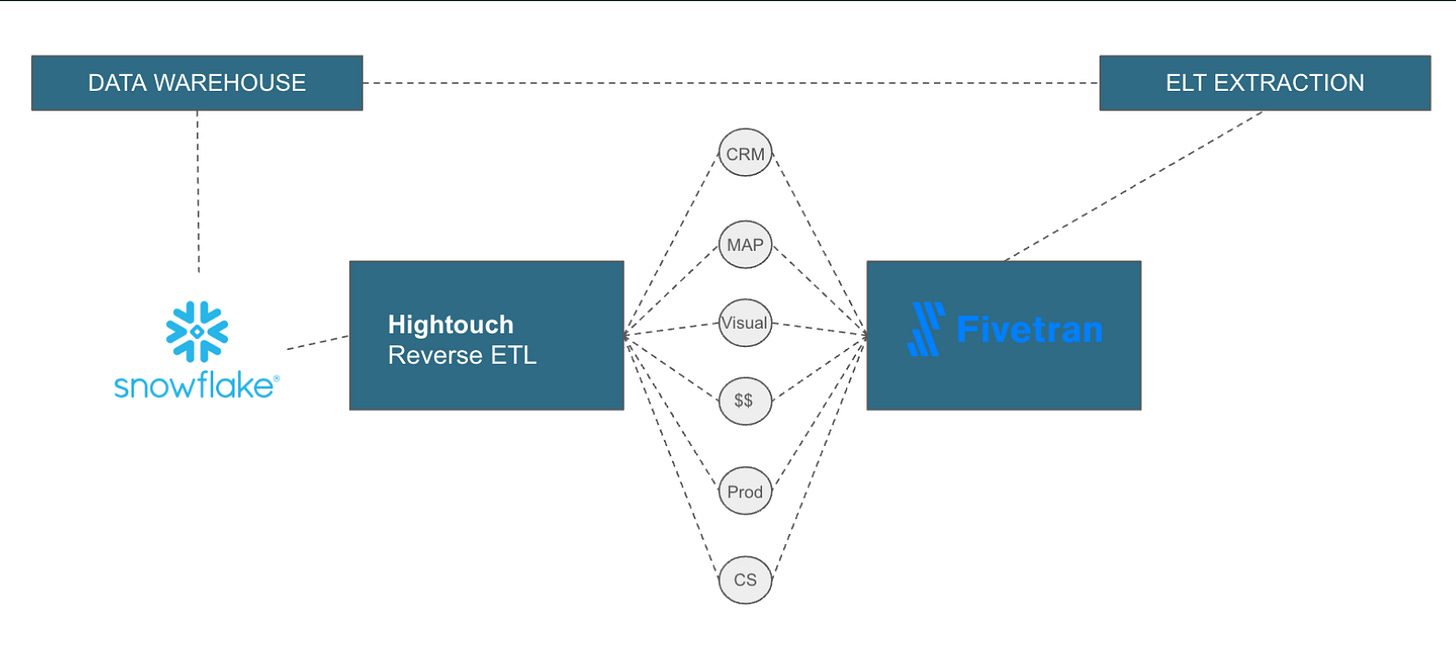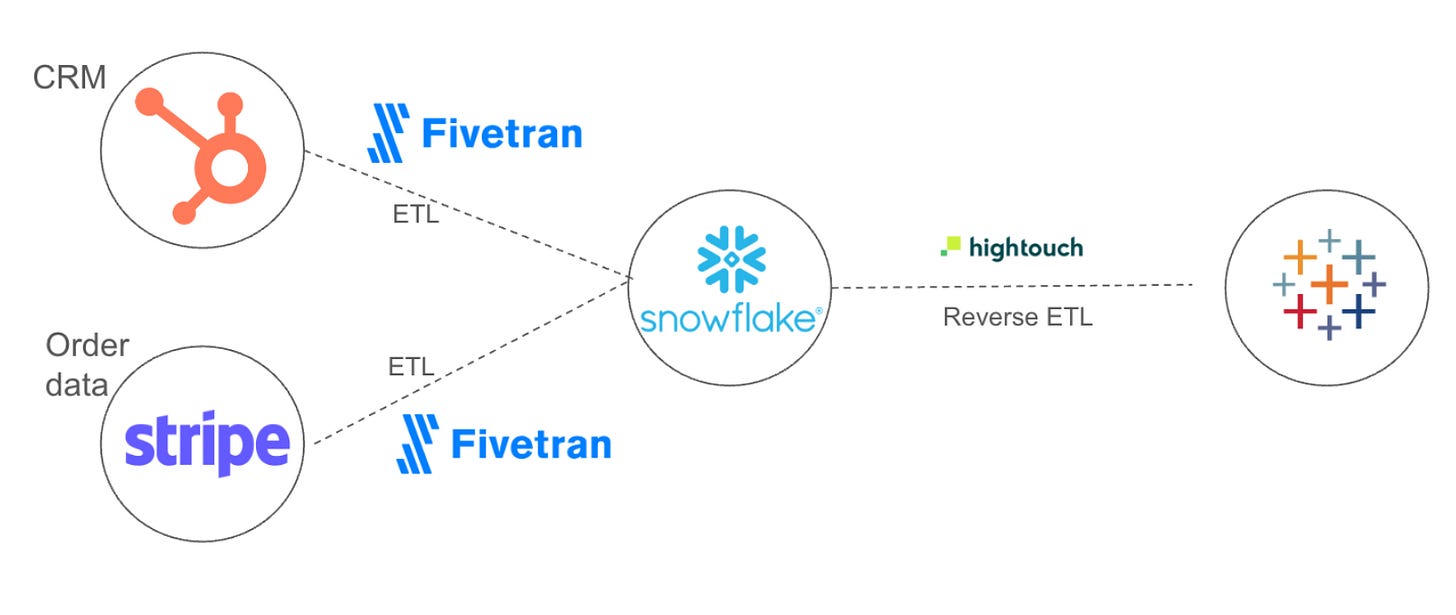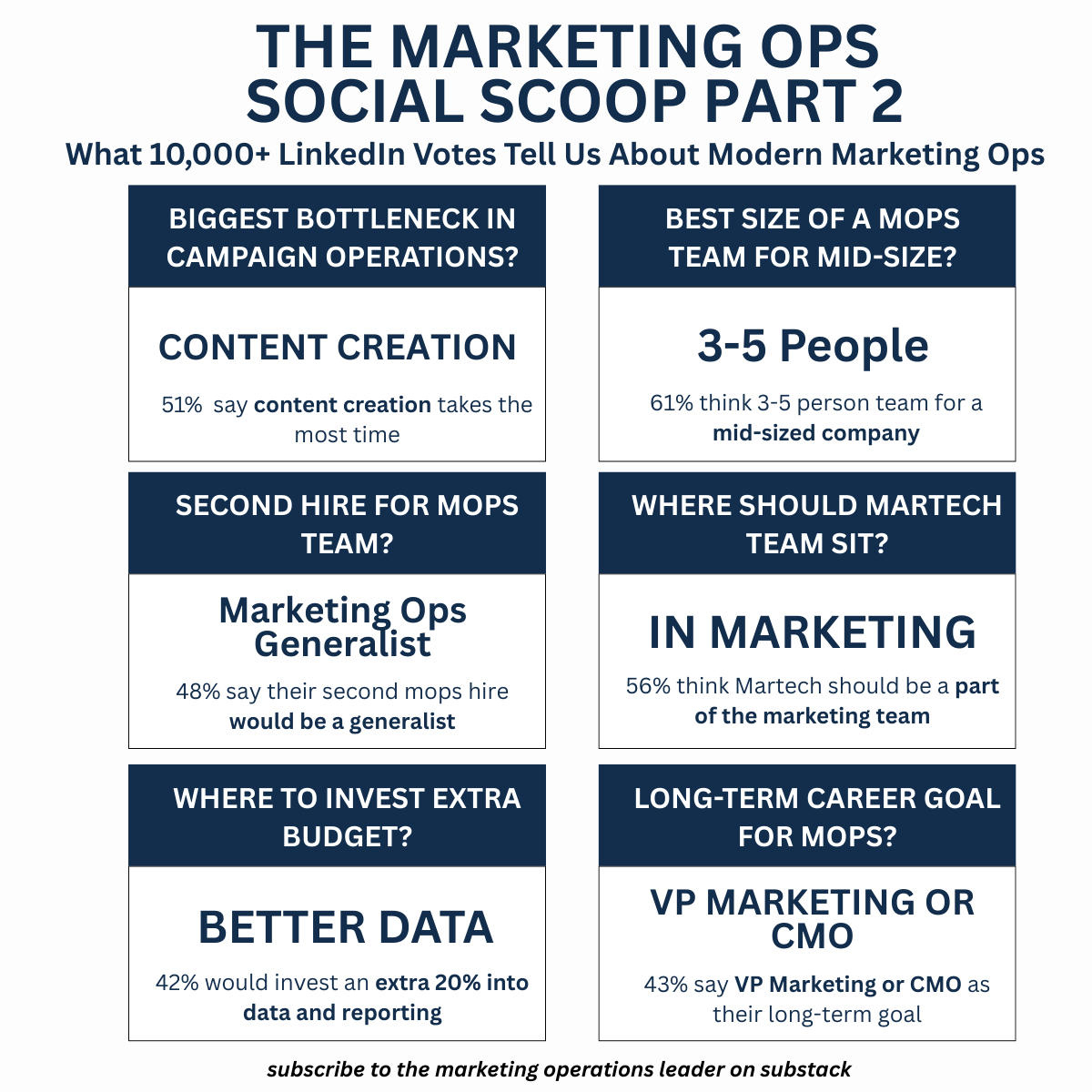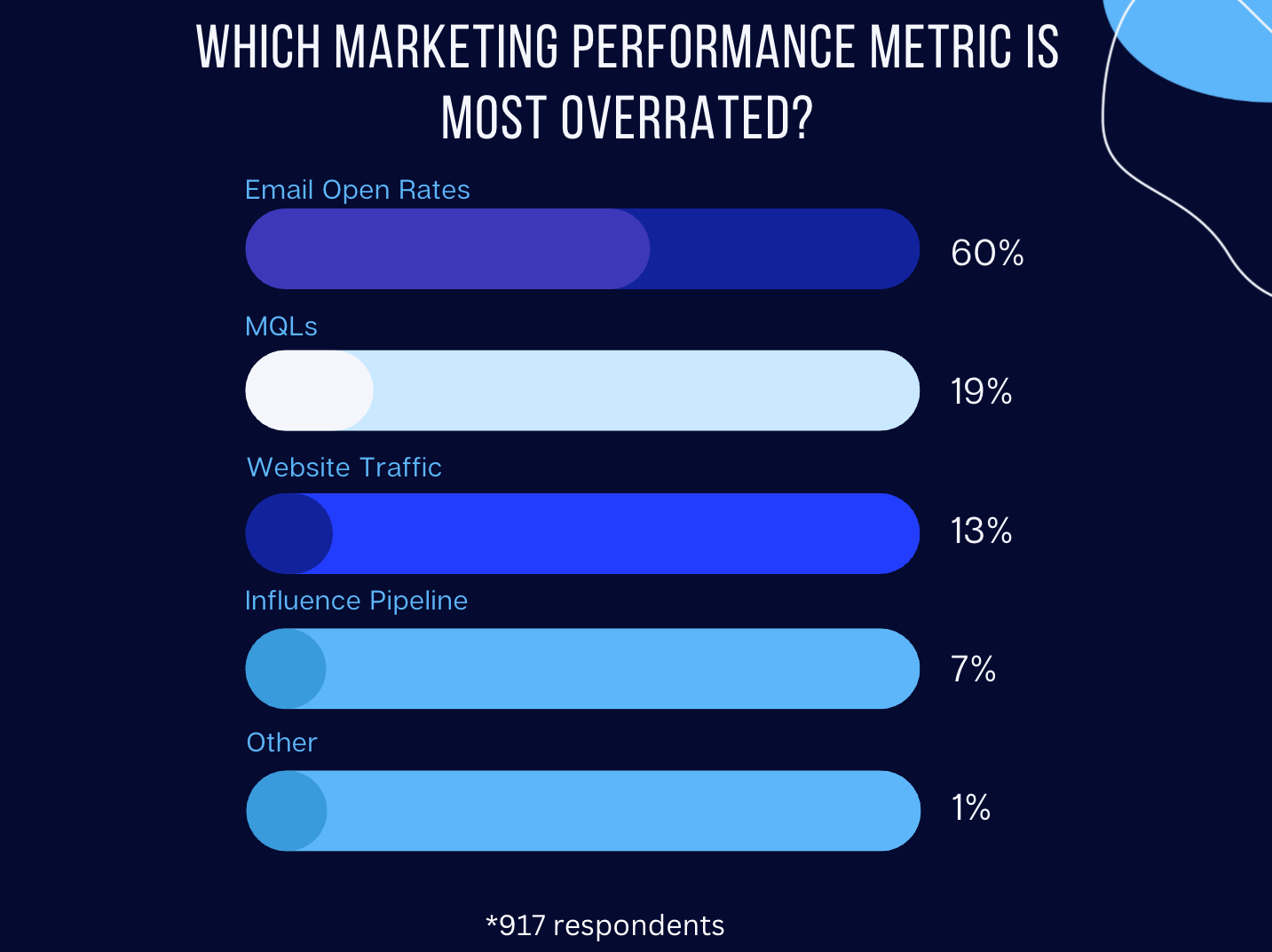How to Move Away From CRM as Your Source of Truth
Also - part 2 of marketing ops social scoop and what is happening in mops today
In this edition:
How to Move Away From CRM as Your Source of Truth
Part 2 of MOPs Social Scoop - What is Really Going On in MOPs Today
POLL: Which Marketing Performance Metric is Most Overrated? (917 votes)
Exclusive For Paid Subscribers: How to Manage a Team That’s More Technical Than You
Reach Thousands of Marketing Ops and Revenue Ops Professionals by sponsoring the Marketing Operations Leader Newsletter.
Knak: Campaign Creation Without the Headaches
If you’re in marketing operations, you know the pain of slow campaign builds, brand inconsistencies, and endless back-and-forth with creative teams. Knak fixes that.
With Knak, you can give your marketers a no-code platform to create perfectly branded emails and landing pages, without touching your backlog or breaking brand guidelines.
It integrates seamlessly with your MAP (Marketo, Eloqua, SFMC, HubSpot, and more) so your team can go from idea to launch in minutes, not weeks.
Less waiting. More launching. Happier stakeholders.
See how Knak makes campaign ops effortless →
How to Move Away From CRM as Single Source of Truth
A “Single Source of Truth” (SSOT) is about having one trusted place for your most accurate, real-time business data. For years, that has often been the CRM. But today, that approach does not hold up for most organizations.
When CRM as Single Source of Truth Makes Sense
It can work if:
Most of your customer data already lives in the CRM
You are primarily sales-led
You are a services business or early-stage startup
You need a quick fix for sales and marketing misalignment
You lack dedicated data and engineering resources
Why CRM Falls Short
Limited scope and misses marketing, product, and success data
Inflexible for complex modeling
Intentional restrictions on joins and queries
Not built for deep analytics
Costs scale quickly
Why a Data Warehouse Works Better
Data warehouses like BigQuery, Snowflake, Redshift, Synapse, or Databricks are more accessible, cost-effective, and flexible. But there is a catch. You will need ETL to pull data in from customer and activation tools, and reverse ETL (tools like Hightouch or GrowthLoop) to push that enriched data back into activation platforms like HubSpot or Marketo.
Reverse ETL tools often include an audience builder or segmentation interface. This means you might not need a standalone CDP. This setup is often called a composable CDP.
Other Options for Single Source of Truth
Customer Data Platforms (CDPs) for unified profiles
Master Data Management (MDM) tools
Data integration platforms
Making Single Source of Truth Work
Decide if CRM should really be your SSOT
Have the right skills (SQL, relational databases, Python optional)
Get leadership buy-in early
Design workflows for capture, enrichment, and activation
Your SSOT is not just about storage. It is about enabling every team to work from the same, trusted version of reality. For many, that means moving the center of gravity away from the CRM and into a modern, flexible architecture.
Below are 2 diagrams, one that shows the flow of a data warehouse as single source of truth at a high-level, and another that shows a more close up version of what is happening.
High-Level Diagram
Close-Up Diagram
Part 2 of “What 10,000+ LinkedIn Votes Tell Us About The State of Marketing Ops Today”
The Marketing Ops Social Scoop: Part 2
I run a marketing + ops poll almost every week. Let’s dive in:
What is the biggest bottleneck in campaign operations? (512 respondents)
Content creation – 51%
Data/list segmentation – 26%
Reporting & insights – 14%
Platform setup – 9%
Insight: Even in 2025, content is the bottleneck. Ops can streamline processes and automate workflows, but nothing moves until strong content is ready.
How big should a marketing ops team be at a mid-sized company? (737 respondents)
3–5 people – 61%
6–10 people – 28%
1–2 people – 12%
Insight: 3–5 feels like the sweet spot. It’s enough to cover core functions without overwhelming any one person. Still, plenty of companies run lean and burn out their ops team in the process.
You’re a 1-person marketing ops team. Who should be the next hire? (692 respondents)
Marketing Ops Generalist – 48%
Data Specialist – 23%
Campaign Building Expert – 21%
Tech Stack Architect – 8%
Insight: Most would duplicate themselves first. Note however that bringing in a true data expert can level up your strategy and reporting faster than another generalist.
Where should the martech team sit in the organization? (747 respondents)
Marketing – 56%
Revenue Operations – 26%
IT / Business Systems – 10%
Other – 7%
Insight: Most orgs still keep ops under Marketing. But the shift toward centralized RevOps is gaining traction, especially in larger orgs and SaaS.
If you had 20% more budget, where would you invest it? (489 respondents)
Improved data & reporting – 42%
Better automation & AI – 30%
Training for the team – 23%
More paid media – 5%
Insight: Given all AI and marketing capabilities require good data: most ops leaders would invest in their foundations: cleaner data, smarter systems, and stronger team capabilities.
How long does a marketing automation migration take (500K database)? (635 respondents)
3–6 months – 55%
6–9 months – 23%
Less than 3 months – 19%
Other – 3%
Insight: Most say 3–6 months. Sub-3-month migrations sound great, but often skip key steps like QA, training, or full data migration. Plan accordingly.
What is the long-term career goal for most people in Martech? (749 respondents)
VP of Marketing / CMO – 43%
VP of Marketing Ops – 25%
Consulting – 23%
VP of Martech – 9%
Insight: Most ops pros want to move into broader leadership, but nearly a quarter see consulting as the end goal. Flexible, high-impact, and increasingly lucrative.
POLL: Which Marketing Performance Metric is Most Overrated?
Top Commentary from Social
Email Open Rates are scientifically less accurate than Horoscopes and Tarot Card readings. - Mark Ruch
How are the responses to this not 100% Email Open Rates???!?!- Courtney McAra
None of them represent a leading indicator in and of themselves. Not in the era of bots, which we have been in for some time. This is why the ultimate questions are "why did this happen?" and "what made it happen?" And neither can be answered with even a handful of KPIs. Time Lag alone makes this impossible. This means that B2B marketers have been kidding themselves for a long time.- Mark Stouse
Interested in reaching over 6,000 marketing ops and revops professionals? You can also get in front of 50,000 marketers on Linkedin and garner 100,000’s of impressions for your brand. Fill out this form to learn more about The Marketing Operations Leader sponsorships.
Keep reading with a 7-day free trial
Subscribe to The Marketing Operations Leader to keep reading this post and get 7 days of free access to the full post archives.







